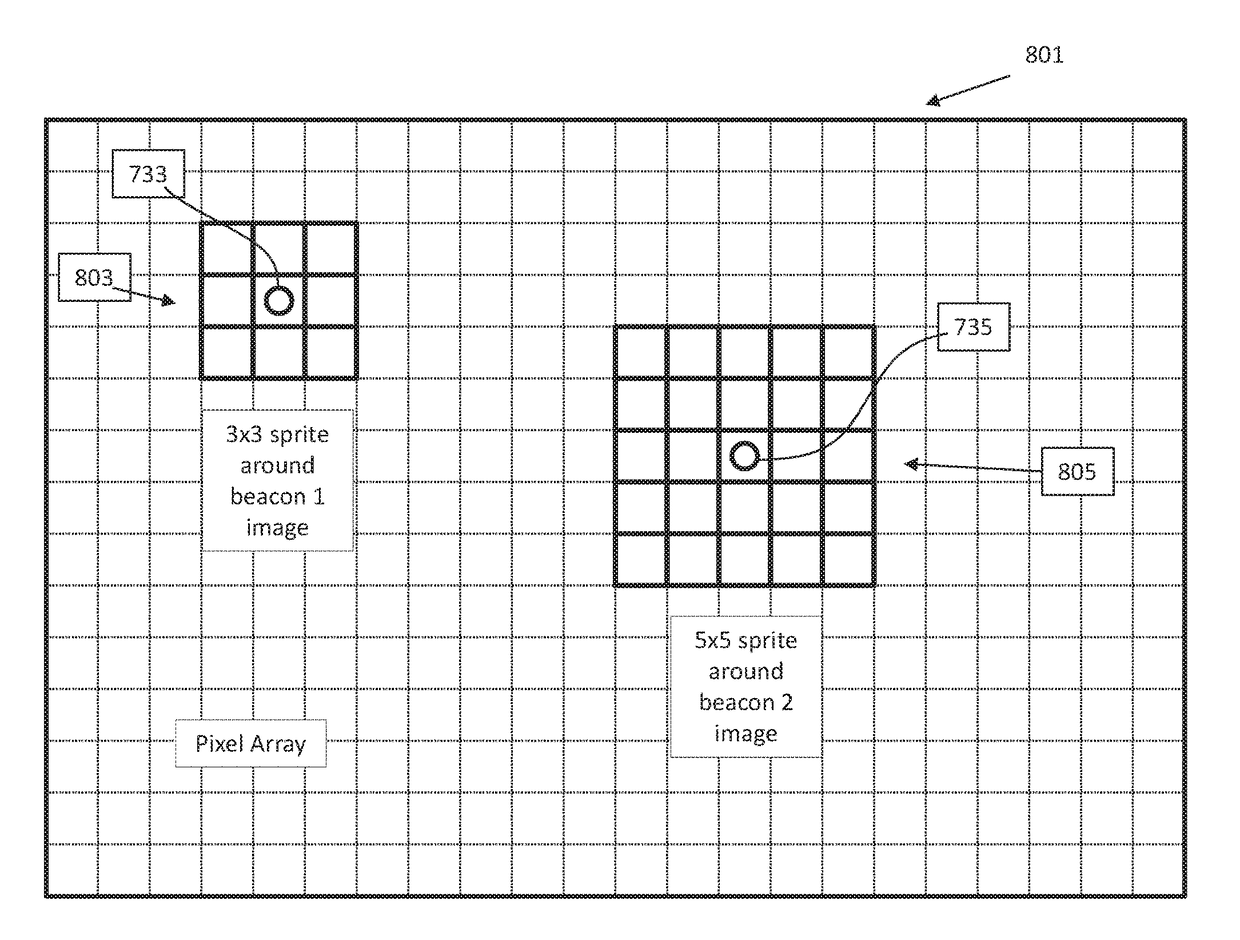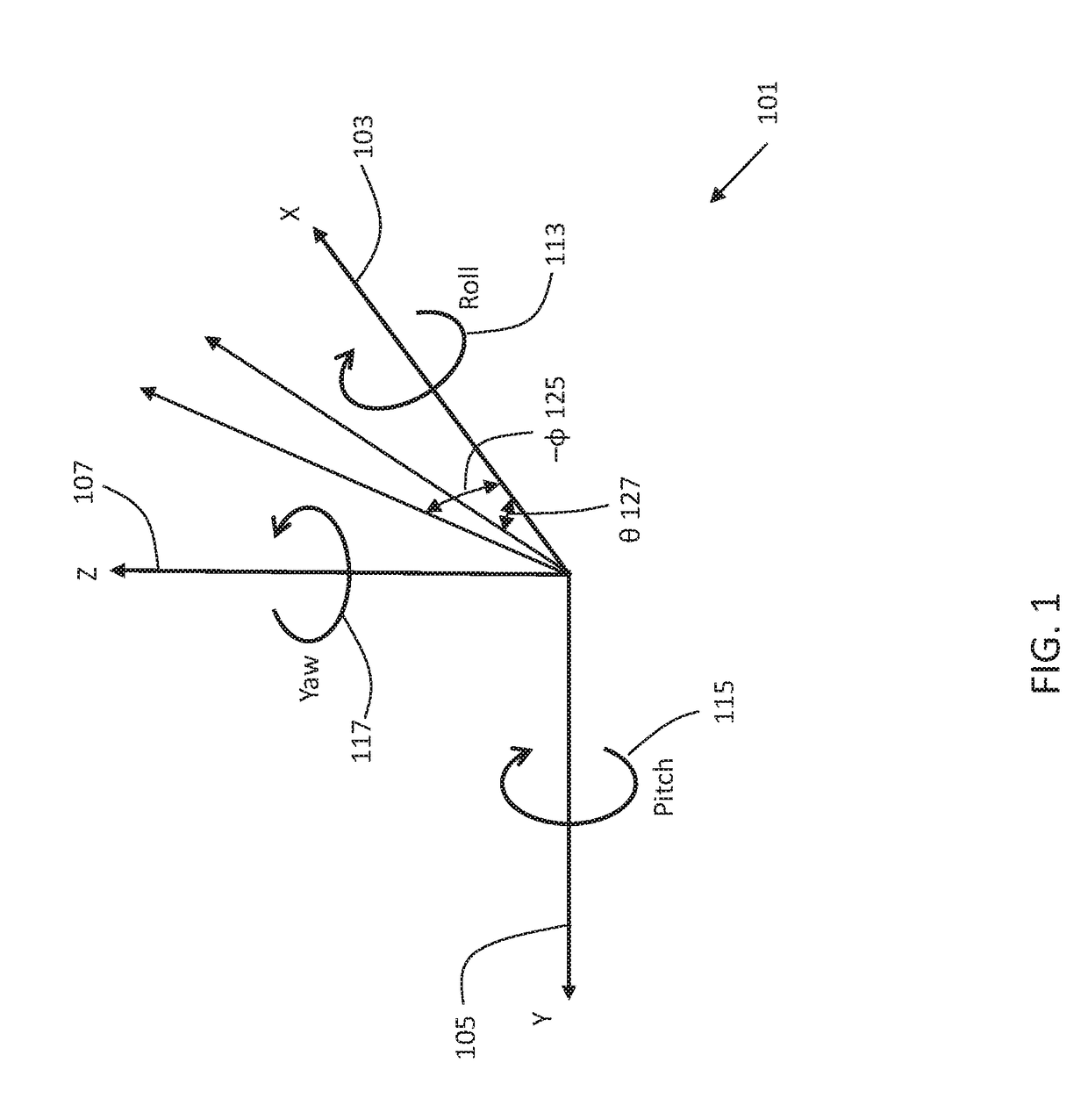Localization method and apparatus
a technology of localization and method, applied in the direction of vehicle position/course/altitude control, using reradiation, instruments, etc., can solve the problems of large processing power, heavy sensor equipment, and algorithms that are too slow for many applications, and achieve the effect of higher frame ra
- Summary
- Abstract
- Description
- Claims
- Application Information
AI Technical Summary
Benefits of technology
Problems solved by technology
Method used
Image
Examples
Embodiment Construction
[0037]Coordinate System for Purposes of Discussion
[0038]Refer to FIG. 1 for a depiction of the coordinate system 101 we will use in the teachings below. It shall be understood that the depicted coordinate system 101 is for illustrative purposes and that other coordinate systems may be used, including the use of quaternions for representing pose, and the coordinate system 101 depicted is used for purposes of illustration. We will in general refer to the forward direction 103 as “positive X” and the left-ward direction 105 as “positive Y”. Therefore, following the right-hand rule, the vertical direction upward 107 will be “positive Z”. For pose, we will define rotations around these axes using the right-hand rule. Positive roll 113 is clockwise rotation around the X-axis as shown, and may be referred to with the variable ψ (not shown). Positive yaw 117 is rotation to the left around the Z-axis as shown. A yaw angle e.g. 127 may be referred to with the variable θ. Positive pitch 115 is...
PUM
 Login to View More
Login to View More Abstract
Description
Claims
Application Information
 Login to View More
Login to View More - R&D
- Intellectual Property
- Life Sciences
- Materials
- Tech Scout
- Unparalleled Data Quality
- Higher Quality Content
- 60% Fewer Hallucinations
Browse by: Latest US Patents, China's latest patents, Technical Efficacy Thesaurus, Application Domain, Technology Topic, Popular Technical Reports.
© 2025 PatSnap. All rights reserved.Legal|Privacy policy|Modern Slavery Act Transparency Statement|Sitemap|About US| Contact US: help@patsnap.com



